Five Essential Pieces for Trumpet - with playing hints and tips
by Christian Morris
What do we mean by 'essential pieces?' Simply put, these are the most famous pieces written for the instrument, the works that people like to hear in concerts and you are most likely to need (and to want!) to learn to play. We also call this an instrument's core repertoire.
Here then are five essential pieces for the trumpet selected from the Baroque to the twentieth century.
Baroque
1. Trumpet Voluntary
This tune and the one below are not only the most famous baroque works for the instrument, but possible the most famous of all compositions for the trumpet. Surprisingly neither started life as works for trumpet, being written for the keyboard 'in the trumpet style.'They are especially useful for playing at weddings - The Prince of Denmark's March, for example, was played at the wedding of Prince Charles and Lady Diana, in 1981.
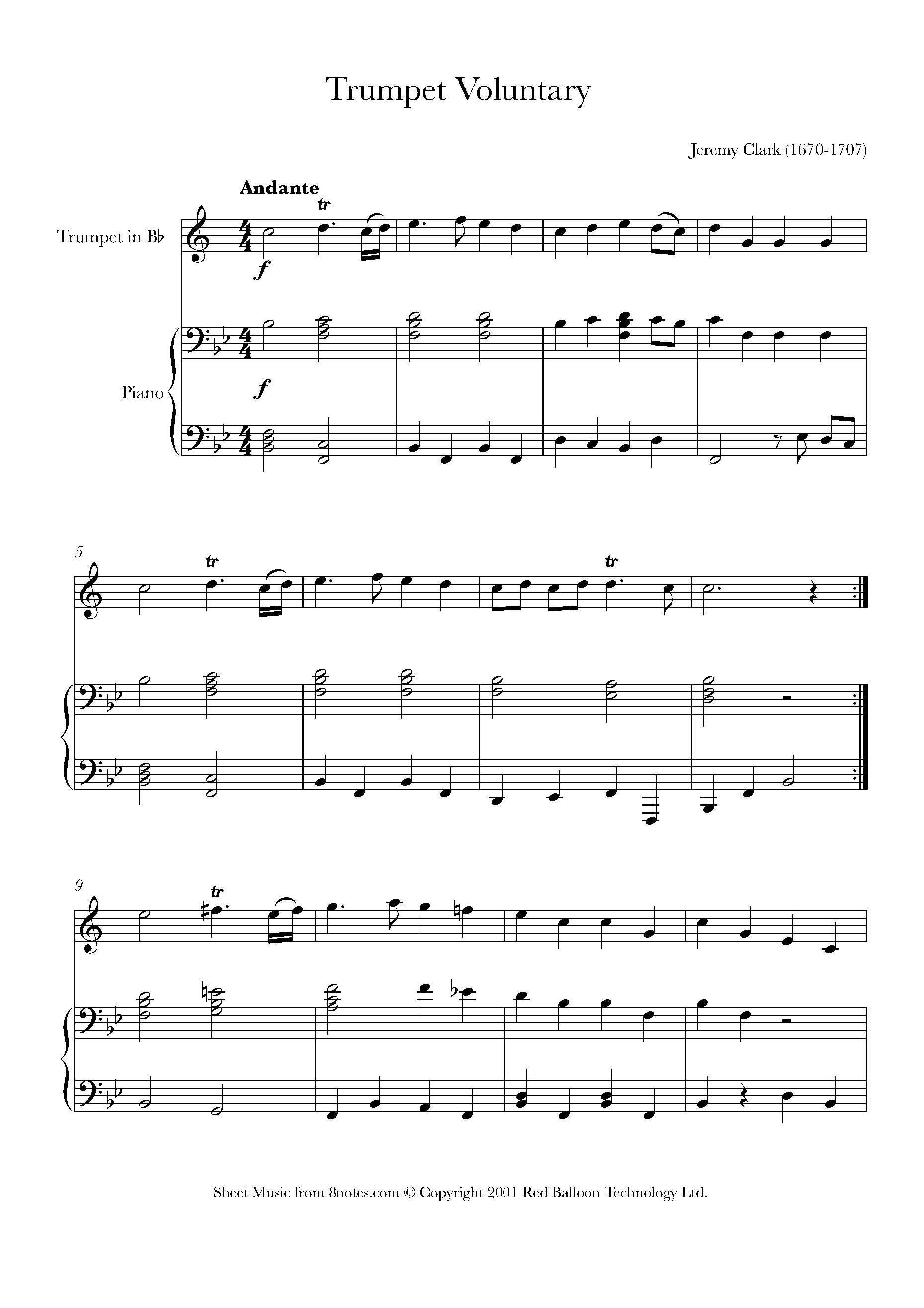
Trumpet Voluntary
2. Trumpet Tune
Both works need a bright sound, with vibrato used sparingly. Make sure you play the dotted notes for their full value (perhaps even a little longer) - they must not sound like triplets.An important aspect of baroque music is also that trills should begin on the higher of the two notes. Listen, for example to Maurice André play the opening of the The Prince of Denmark's March, where he dwells for some time on the upper note of the first trill.
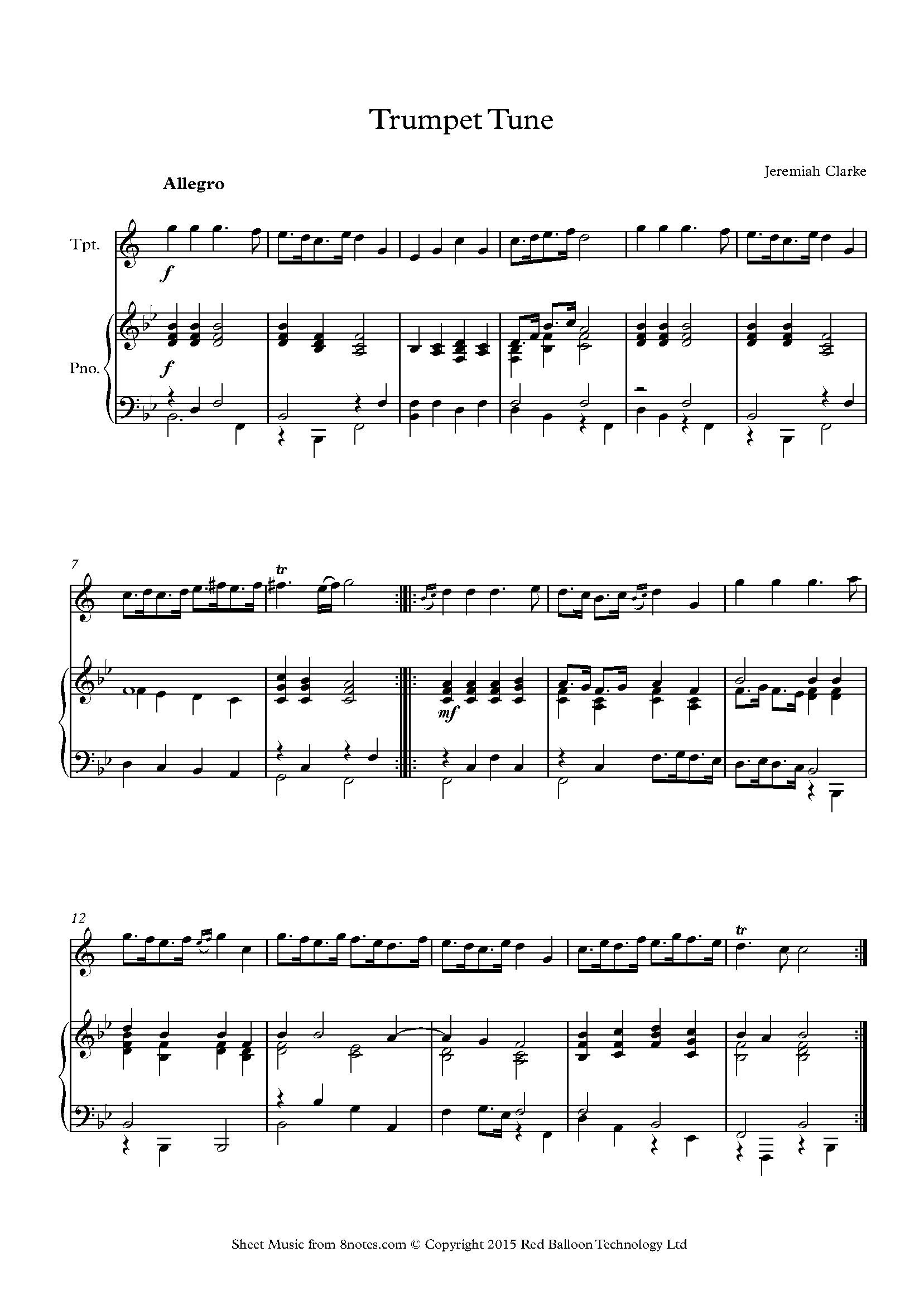
Trumpet Tune
3. Haydn Trumpet Concerto 2nd mvt theme
The Haydn Trumpet Concerto was the first concerto written for a new 'keyed' trumpet. Originally, trumpets did not have valves, being simply a mouthpiece a long pipe and a bell. This meant that they could only play melodies in a very high register, making baroque music very difficult to perform. The new instrument allowed the trumpet, for the first time in its history, to play melodically in the very lowest registers. The slow movement of Haydn's Trumpet Concerto takes full advantage of this.The second movement of the Haydn Trumpet Concerto is an achingly beautiful and provides, even for fully professional players, one of the key tests of their ability to play with control and expressivity. Breaths should only be taken where there are rests (with the possible exception of a breath before the last quaver of bar 20). Be careful not to rush the demi-semiquvers at bars 14, 15, 38 and 39 - there is much more time than you think! Aim for a beautiful, rounded sound overall.
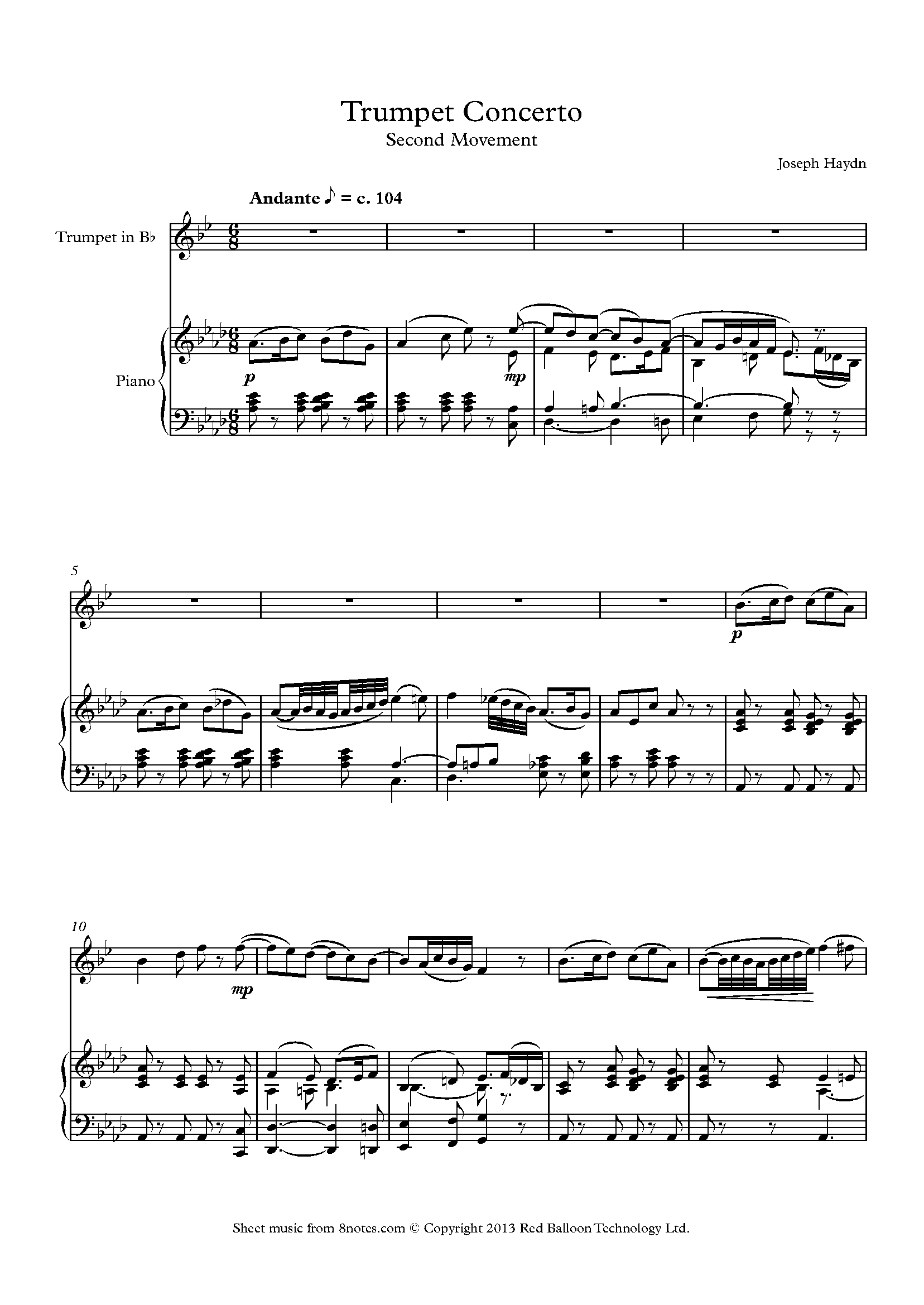
Haydn Trumpet Concerto 2nd mvt theme
Romantic
4. Grand March from Aida
Given the great technical strides made in trumpet design, with the invention of keyed and then valved instruments, it is perhaps surprising that there are not more Romantic works for solo trumpet. Despite this, the trumpet features prominently in orchestral works throughout this period. They can make great solos.A good, solid and even sound is needed in this piece - especially don't let the volume fall off on the longer notes, which should be strong throughout. Make sure that the difference between a triplet rhythm (anacrusis before bar B) and the dotted rhythm (next two notes that follow) is clear.
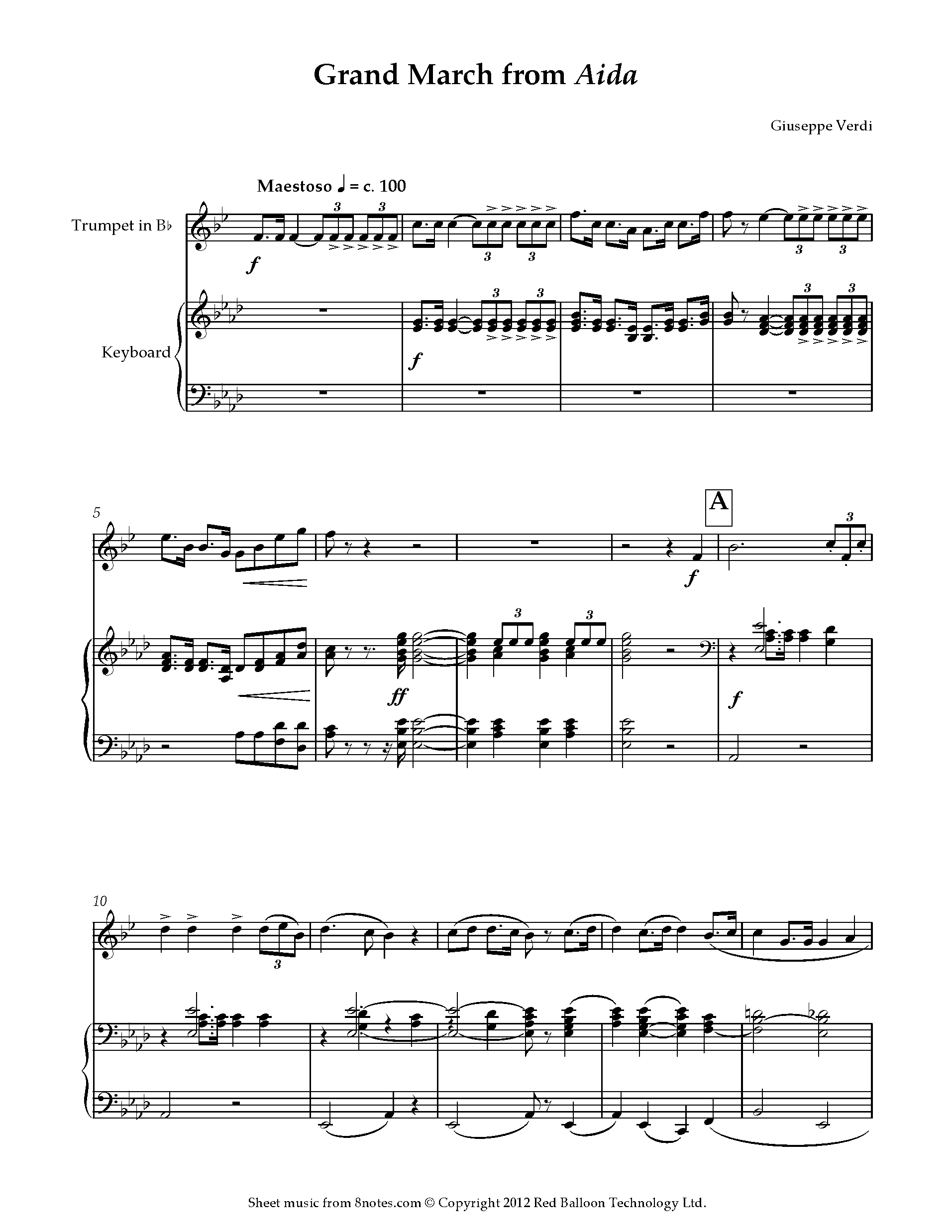
Grand March from Aida
4b Böhme - Trumpet Concerto (1899)
The Böhme concerto is one of the few true Romantic concertos for the trumpet (others exist in the Romantic style but actually were written in the twentieth century).It is a piece for advanced players, requiring not just technical ability but physical stamina. The first movement is full of dramatic contrasts - be sensitive to these and adapt your playing to suit. The first entry is lyrical but with more than a hint of suppressed tension. You can transmit this feeling by playing it with the minimum of vibrato and fuss, saving your most expressive playing for the second subject at bar 31. From 67 things become more relaxed, and by 72 jocular even. Keep your playing light in order to convey this. The main tune in the recapitulation (bar 85) can be more forceful than at the opening, but maintain the feeling of surpressed tension. This will give the final appearance of this melody, in double tongued semiquavers at bar 135, even more impact. The close, needless to say, should be loud and dramatic.
20th Century
5. St Louis Blues
Trumpet playing developed in any number of directions during the twentieth century, with many great orchestral and solo works featuring the instrument. Near the beginning of the century, however, emerged an entirely new style near New Orleans: the blues. Like jazz, with which it was intimately entwined, it was to become one of the most important styles of the twentieth century. It is fair to say that no trumpeter's repertoire is complete without at least one blues piece.Sometimes called the 'the jazzman's Hamlet', W.C. Handys St. Louis Blues is an important and popular piece in the blues style. Originally a song, it is frequently performed on the trumpet, as Handy did himself (see video).
The piece is marked 'With a Swing', but listen to the recording of Handy playing his own work and you will realise that he plays the rhythms surprisingly 'straight'. However the blues style allows a broad range of interpretation, so you should choose what works best for you.
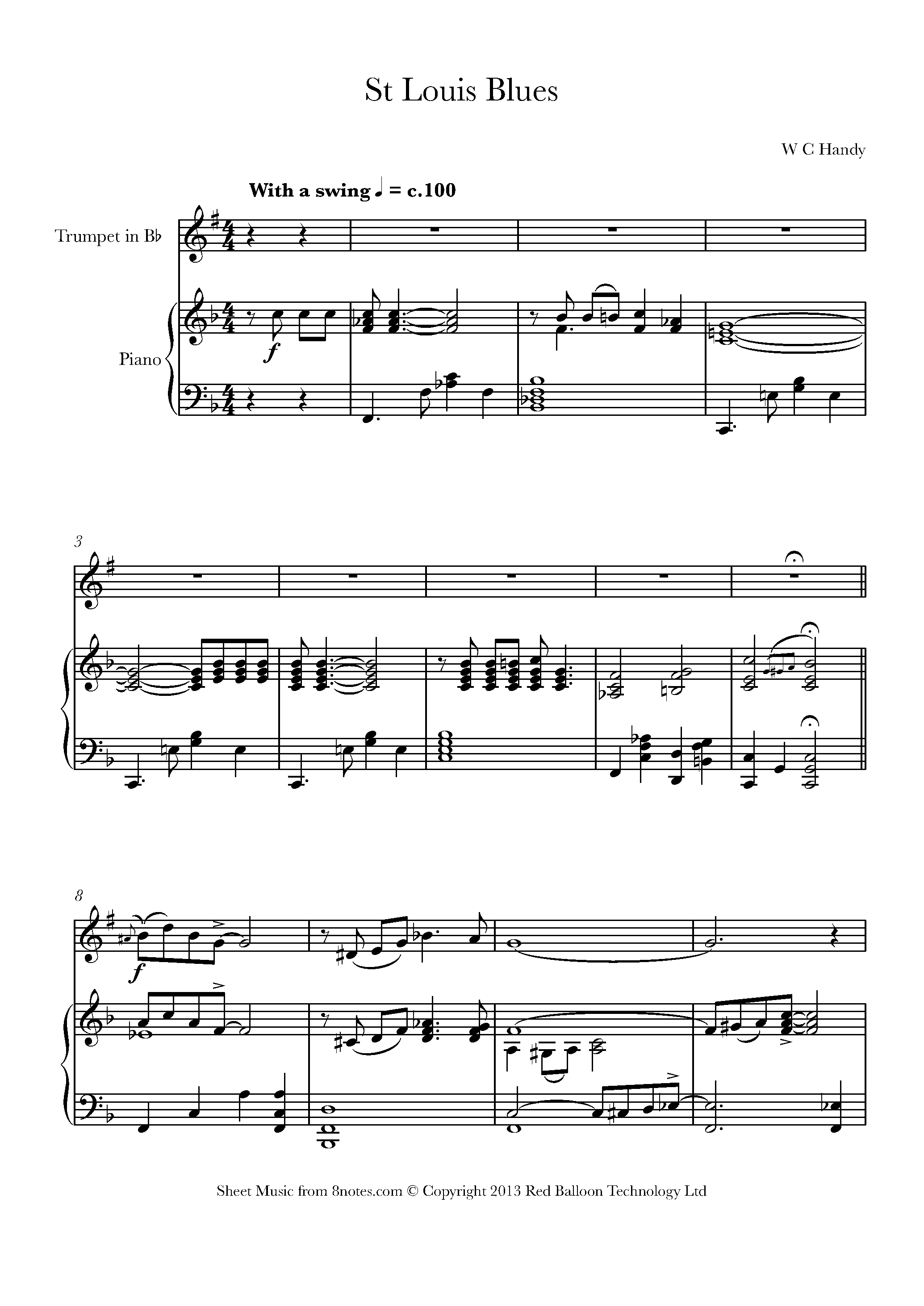
St Louis Blues